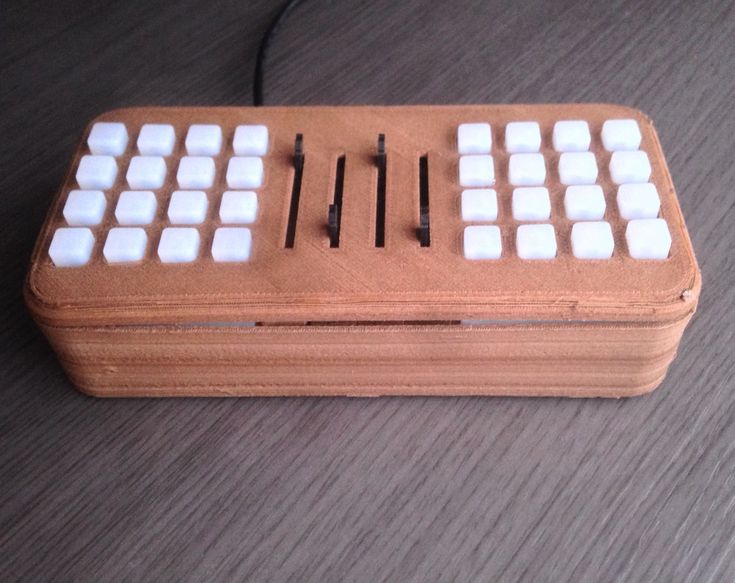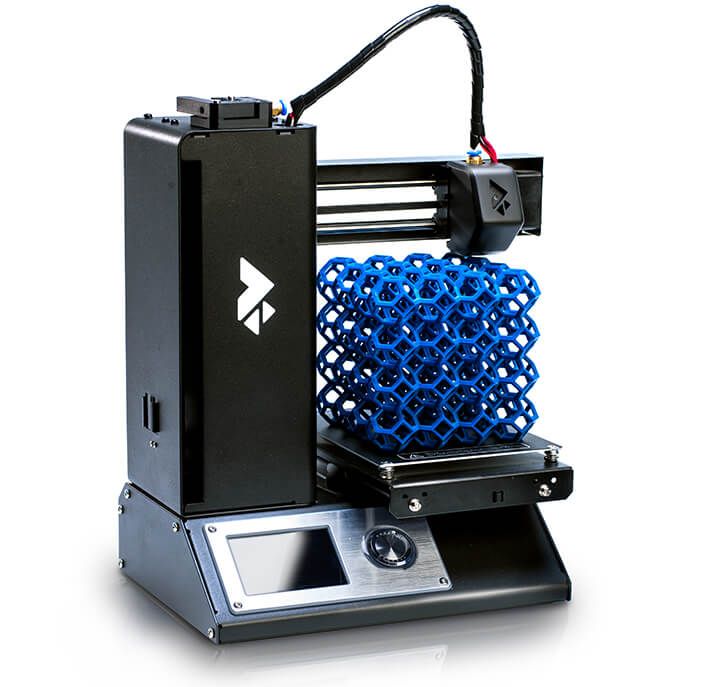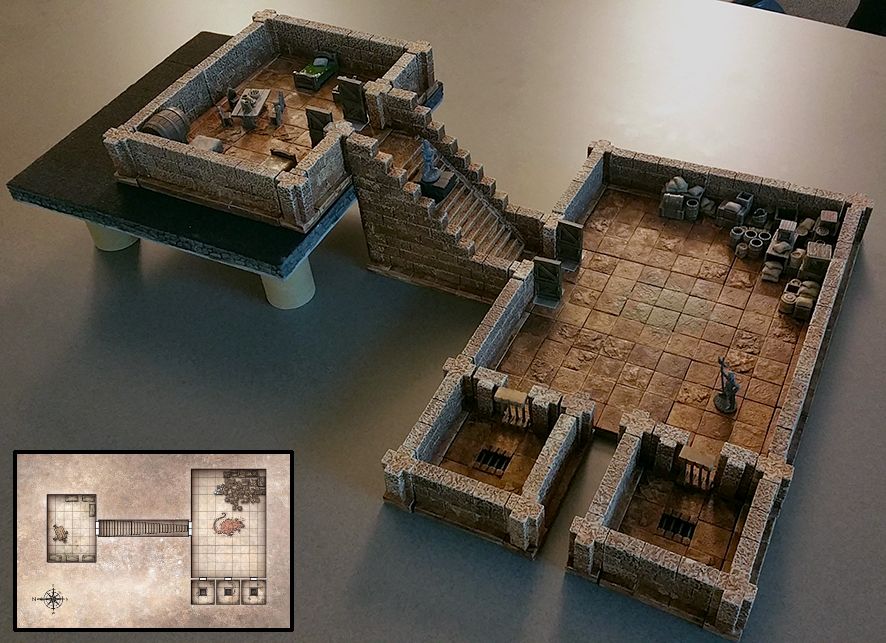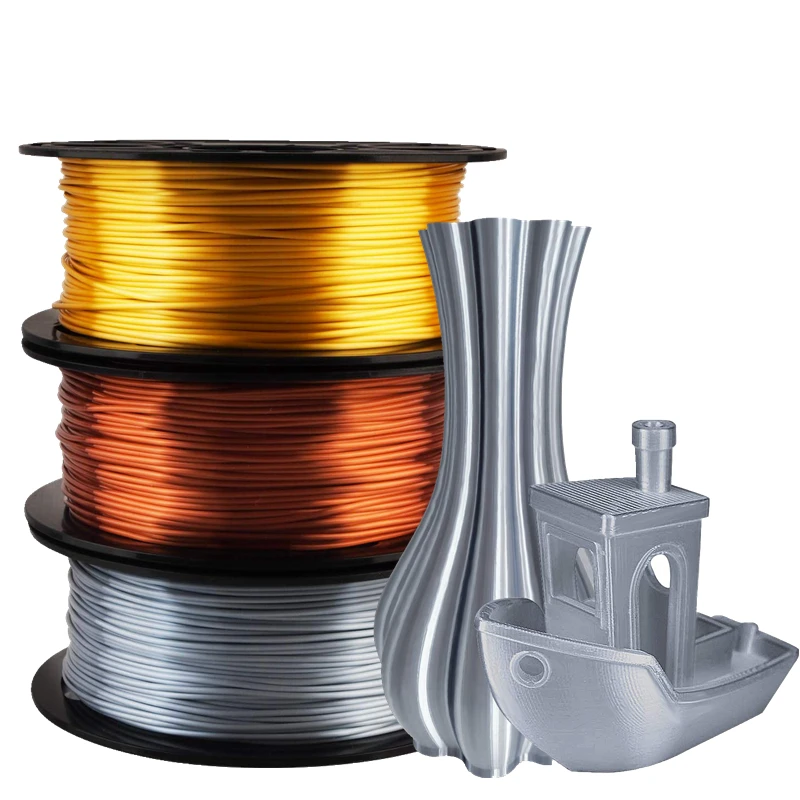Most printed 3d object
What Is The Most 3D Printed Object? « Fabbaloo
By Kerry Stevenson on March 1st, 2019 in Design
Tags: history, le fabshop, model, thingiverse
The Elephant by le FabShop [Source: Medium’]I was reading an interesting piece by Bertier Luyt when a question arose.
Luyt is one of the pioneers of desktop 3D printing, having started a couple of ventures based in France some years ago. One of them was le FabShop, which launched in 2012 and was a reseller of initially MakerBot equipment. Le FabShop also provided training, a maker space for public use, 3D print service and several 3D designs to the public.
Unfortunately, bad times fell upon le FabShop after a time, specifically when MakerBot began changing their approach to sales. Rather than having multiple smaller resellers, such as le FabShop, the then-growing 3D printer manufacturer changed to focus on supplying gear to a much smaller number of large-scale distributors.
Former CEO of le FabShop, Bertier Luyt [Source: Fabbaloo]Basically this created a middleman between MakerBot and their original resellers, and that middleman took their cut of the proceeds, dramatically reducing the revenue of the resellers, including le FabShop. As a result, le FabShop had to reposition its activities and eventually shut down in the summer of 2016.
In the Medium post, former le FabShop founder Luyt recalls the entire experience in great detail. It’s a great read, especially if you’ve been involved in 3D printing for several years.
One section of the piece describes one of le FabShop’s gifts to the 3D print community: The Elephant. Luyt describes the origin of the Elephant’s design, which involves creating a 3D model for a makerspace in Nantes. The Medium post is a celebration of the Elephant’s fifth anniversary.
This 3D model, which by the way can still be freely downloaded from Thingiverse, is a very popular 3D model, having had over 1400 “makes” shared in Thingiverse alone.
Another view of the popular 3D printed “Elephant” [Source: Medium]After the release of the Elephant it rapidly became extremely popular, even reaching the cover of the Wall Street Journal in June 2014, and being named as one of the “iconic” 3D models, along with the Stanford Bunny.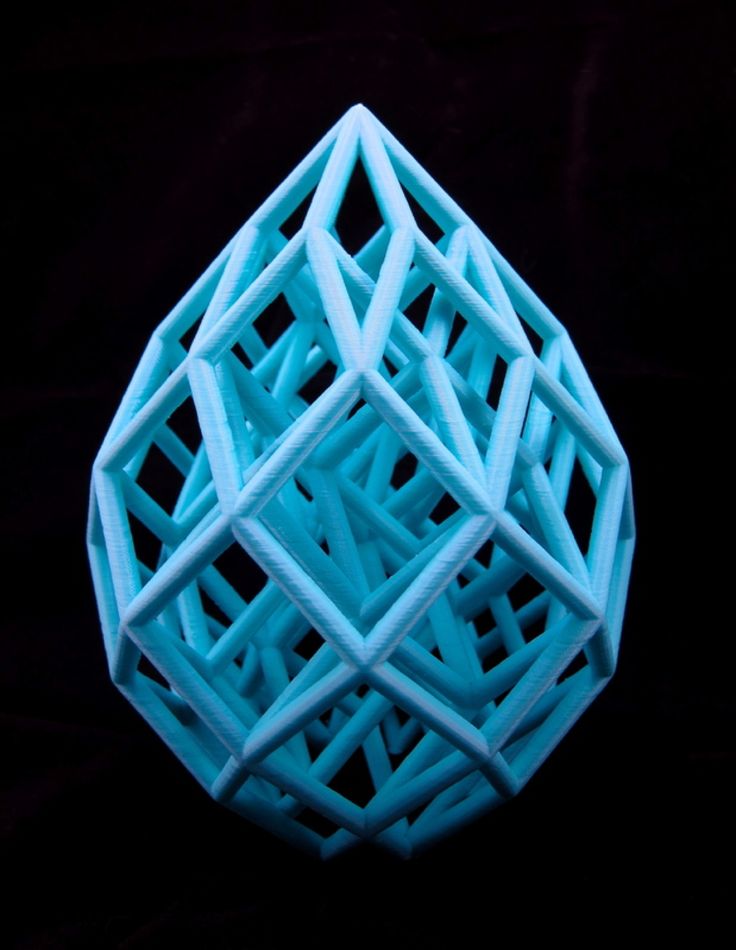
Luyt says:
“It was instantly a sensation. We started receiving messages from all over the world, people were printing the elephant in all sizes and colours. The 3D model is magic. It prints flat on the 3D printer bed, then unfold to stand on its legs, and it’s fully articulated; with 0 support needed, and 0 infill material.”
And:
“It’s been used by every 3D printing company to calibrate their printers, including HP when they presented their new fusion-jet printing technology.”
And:
”The elephant turns 5 today. It is probably the most 3D printed thing in the world, and definitely one of the most downloaded object ever. It has inspired many to try new things in 3D printing.”
But is it? I am quite certain the Elephant has been 3D printed zillions of times, but I can think of one other 3D model that has absolutely been 3D printed much more than the Elephant: the humble #3DBenchy.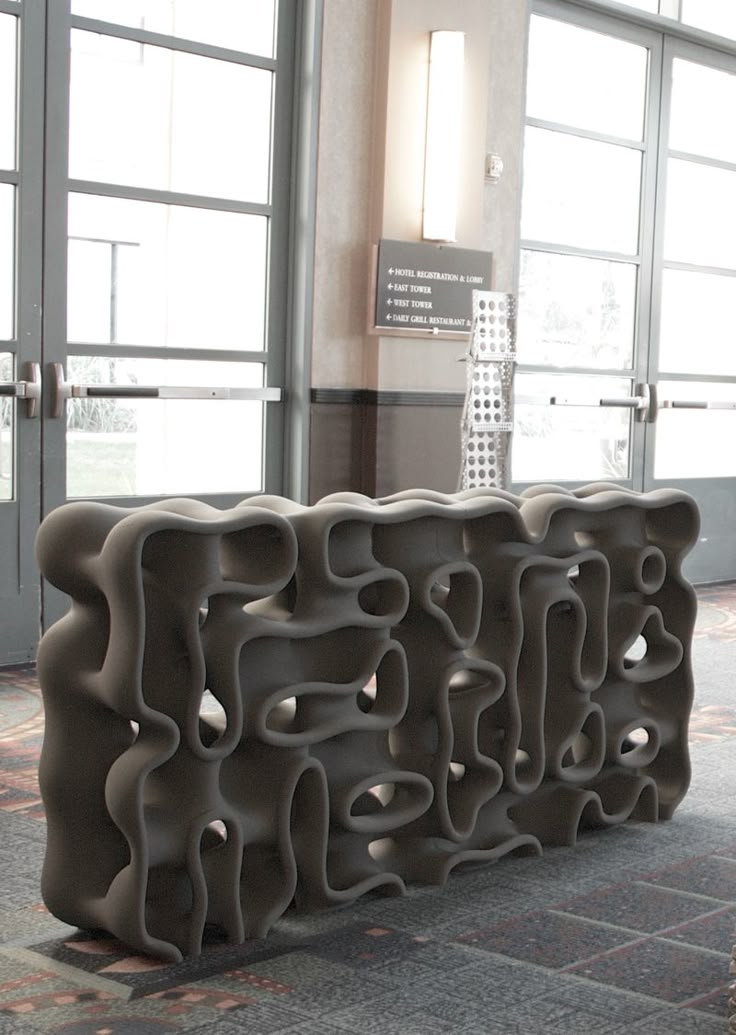
The #3DBenchy, first introduced in 2015 by Creative Tools, a Sweden-based company looking for ways to help the 3D printing community. It’s tagline is “The jolly 3D printing torture-test”, and it definitely lives up to that name.
This object’s versatility as a basic 3D print benchmark object has been recognized by virtually everyone. This is the object that is most frequently 3D printed on almost every device, and is often the first object to print. In late 2017, Creative Tools announced that #3DBenchy was the world’s most 3D printed object. Why? I think it’s because it is straightforward to 3D print, yet has a geometry that puts the equipment to the test.
Another reason for its print statistics are that it is frequently used to tune 3D printers: 3D printer operators will iteratively 3D print #3DBenchy objects over and over, looking for tiny flaws to be corrected in the print parameters.
But if #3DBenchy is the most frequently printed object, it doesn’t take away anything from le FabShop’s Elephant, which will remain a fantastic 3D print.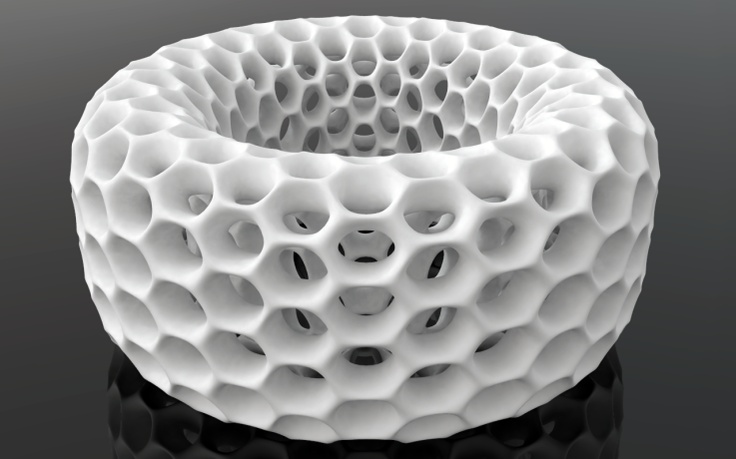
As Luyt says, “Love Live The Elephant!”
Via Medium
Design Of The Week: We Love Our Customers!
This week’s selection is the We Love Our Customers Heart by Additive Industries.
Design of the Week: Bionic Sofa
This week’s selection is the smooth and sweeping Bionic Sofa by designer Alex Demin.
Design of the Week: Articulated Poseable Hand
This week’s selection is the easy-to-assemble 3D printed articulated poseable hand, which can be used in a variety of ways.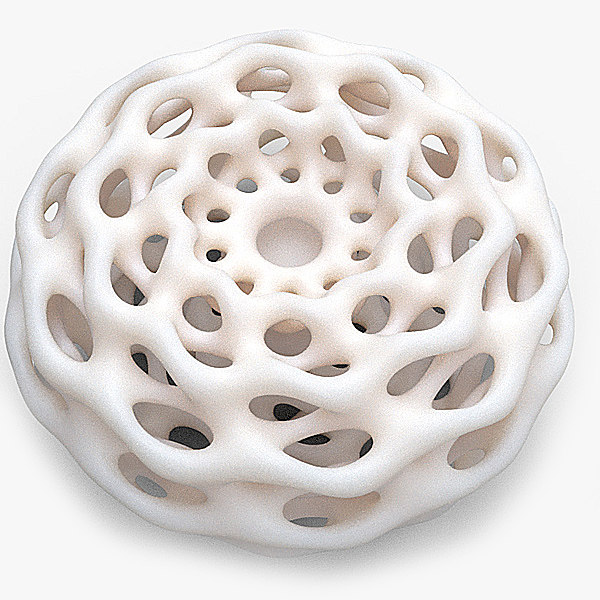
When Generative Design Backfires – VW’s New Wheels
What looked like twigs proved to be generatively-designed shapes, the output of generative design algorithms available in Autodesk’s Fusion 360, then cast in metal.
150 3D Printed Robots To Be Assembled And Offered To STEM Students
A young engineering student, Danielle Boyer, has developed an inexpensive robot targeted at educators and students, and soon there will be 150 of them heading to institutions.
Design of the Week: Nuclear Power Plant Humidifier
Kerry Stevenson, aka "General Fabb" has written over 8,000 stories on 3D printing at Fabbaloo since he launched the venture in 2007, with an intention to promote and grow the incredible technology of 3D printing across the world.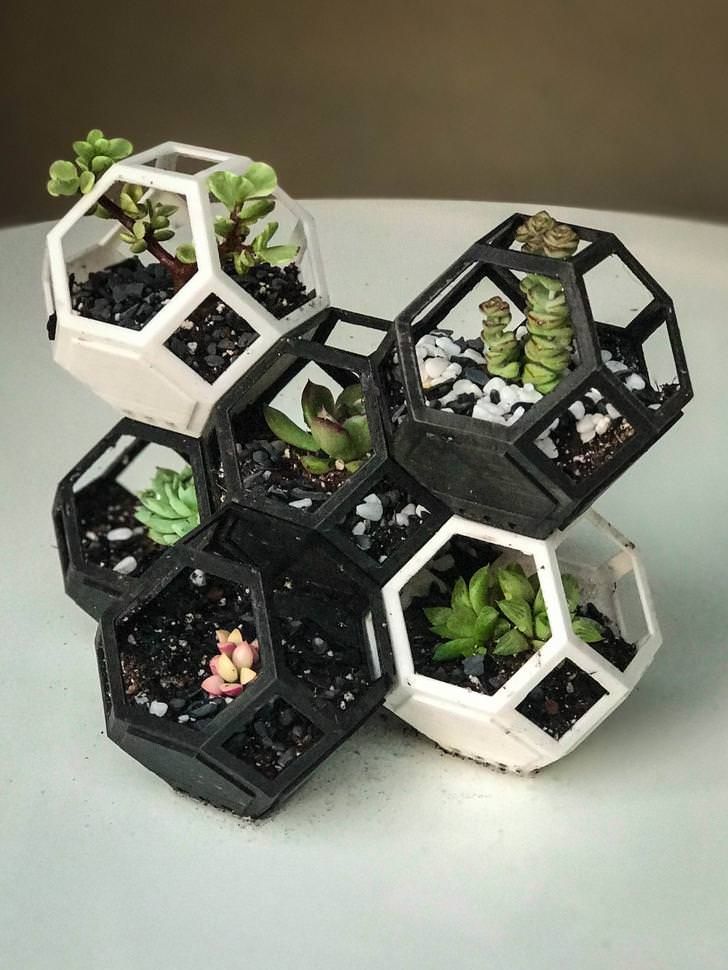 So far, it seems to be working!
So far, it seems to be working!
View all of Kerry Stevenson's posts.
What is the largest 3D printed object? (2021 Update)
Posted By Kat Plewa on Dec 3, 2019 |
From 3D printed hearts to car restorations, Additive Manufacturing has numerous applications in many industries, but did you know that it is also possible to 3D print on a large scale? Concrete houses, bridges or even ship propellers, 3D printing keeps bringing absolutely new, innovative solutions. What is the largest 3D printed object yet? Let’s find out!
#6 Titanium Brake Caliper by Bugatti
The automotive industry is certainly one that makes the most of 3D printing technologies. One of the leaders, Bugatti, wasn’t waiting for their competitors to start benefiting from Additive Manufacturing. They are creating a new path of production using the Selective Laser Sintering (SLS) technique.
Thanks to 3D printing, Bugatti made a huge improvement in their brake caliper design and manufacturing.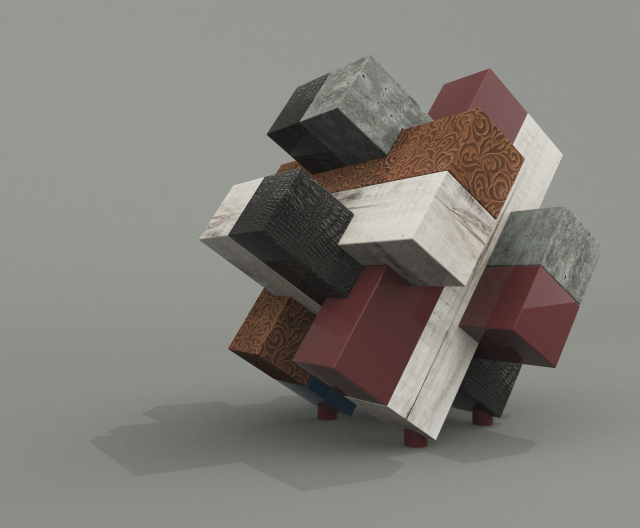 The brake produced with traditional methods weighed 4.9 kg and was made out of aluminum. Additive Manufacturing allowed the engineers to use titanium, which is much stronger and robust. Not only that, but they could also use new design methods bringing the weight of caliper down to 2.9 kg!
The brake produced with traditional methods weighed 4.9 kg and was made out of aluminum. Additive Manufacturing allowed the engineers to use titanium, which is much stronger and robust. Not only that, but they could also use new design methods bringing the weight of caliper down to 2.9 kg!
Only 3D technologies could allow Bugatti’s team to reduce weight and at the same time improve the quality of the 3D printed part. Additive Manufacturing is the true future of the automotive industry.
#5 Two-level villa
https://all3dp.com/1/3d-printed-house-homes-buildings-3d-printing-construction/
Chinese company HuaShang Tengda knows how to produce impressive extra-large projects. Our Top 6 list of the largest 3D printed objects wouldn’t be complete without a concrete 3D printed habitat.
The revolution of using additive manufacturing for houses is the speed of producing them. HuaShang Tengda managed to build a two-story villa in just 45 days! They developed dedicated hardware but also developed an innovative technique complementing 3D printing. First, the frame of the building was put up and then a 3D printer laid the concrete.
First, the frame of the building was put up and then a 3D printer laid the concrete.
To produce this XL object 20 tons of concrete were used! This 3D printed house shows another advantage of Additive Manufacturing: lowering material waste, which reflects on the costs. Most impressive is still the timeframe. 3D printing can improve your production by making it faster and therefore bringing the costs down.
#4 The largest 3D printed bridge
//www.sculpteo.com/blog/2019/02/20/meet-the-longest-3d-printed-bridge-in-the-world/
Another outstanding project on our list is the world’s longest 3D printed bridge produced in Shangai. The previous bridge was built during the Sui Dynasty (581- 618 CE) and it took 11 years to complete it.
To compare, the 3D printed structure was manufactured in less than 19 days! To make the bridge, 68 slide pieces and 64 deck pieces were 3D printed. What is so striking about this bridge is not only the manufacturing speed but also the fact that it includes senor accumulating displacement data which will be used later to improve the design of future 3D printed bridges.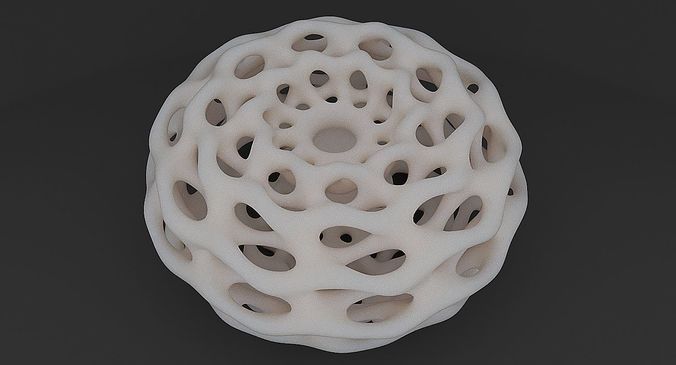
On top of that, the bridge is very strong. It was tested during inauguration when 100 people stood on it at the same time! This experiment truly proves that Additive Manufacturing is totally capable of producing complex constructions that can withstand tons of stress.
#3 World’s first 3D printed propeller
Another industry where 3D printing is a groundbreaking solution to improving the production process is the maritime sector. One of the latest developments is WAAMpeller. It is the first-ever 3D printed ship propeller. Where its unique name comes from?
WAAM is a technology invented especially for this project. WAAM is short for Wire Arc Additive Manufacturing. This 3D method melts metal wire with an electric arc, layer by layer. The WAAMpeller is built of nickel aluminum bronze alloy and composed of 298 layers. The final result was truly impressive and fully functional! The 3D printed propeller was installed on a workboat Stan Tug 1606.
#2 3D printing and space exploration: Aeon 1
Can Additive Manufacturing improve space exploration? Yes! In fact, there are many different ways where 3D technologies print new, better solutions to space travel. Relativity Space, a young American start-up, saw the potential of 3D printing.
They developed robotic arms that are capable of 3D printing with metal. What for? To manufacture a rocket engine: Aeon 1! Rocket engines are extremely hard to design and produce, they are made of multiple parts which raises the risk of failure. Thanks to 3D techniques, the design od a rocket engine could be rethought.
Usually, this component of a rocket has many parts, but thanks to 3D printing, it was composed only of 3 parts! That’s a huge leap forward in terms of material usage, functionality, production time, and costs. It only took one month to manufacture Aeon 1, compared to 6 months when made with traditional technologies. Also, having fewer parts means a shortened assembly time.
Aeon 1 was successfully fired up on numerous occasions, which proves that it’s fully functional and ready for further improvements.
#1 Largest solid 3D printed object
The leader in aircraft manufacturing Boeing knows that producing aircraft is time-consuming and complicated. Not every tool needed to manufacture, for instance, wings, is available on the market. Special equipment is required for a plane to be built. This is exactly why 3D printing is the answer.
Thanks to 3D modeling, engineers from Oak Ridge National Laboratory (ORNL) in cooperation with Boeing were able to produce highly customized and at the same time, the largest ever solid 3D printed object. The part needed was a trim tool. The purpose of this tool is to hold Boeing 777x’s wing skin while it’s being machined and drilled. The tool holds the title of the largest 3D printed object in Guinness Records.
To be able to produce it, the researchers developed Big Area Additive Manufacturing (BAAM) 3D printer. The machine took only 30 hours, instead of 7 days, to produce a large-scale trim tool. The component is a combination of 80% ABS plastic and 20% carbon fiber. It weighs 745 kg, is 5.3 meters long, 1.5 meters wide and 0.5 meters tall. The 3D printed tool showcases how much potential lays in additive manufacturing for the aerospace industry.
The machine took only 30 hours, instead of 7 days, to produce a large-scale trim tool. The component is a combination of 80% ABS plastic and 20% carbon fiber. It weighs 745 kg, is 5.3 meters long, 1.5 meters wide and 0.5 meters tall. The 3D printed tool showcases how much potential lays in additive manufacturing for the aerospace industry.
What is the future of XL 3D printing?
As you see, there are some really impressive projects when it comes to the largest 3D printed object. From improving airplanes production, the longest bridges to building houses, Additive Manufacturing keeps on surprising us with its groundbreaking applications. And it definitely won’t stop there. Every year there are new solutions and projects that come up, such as the biggest yet 3D printed boat.
Big or small, if you have a 3D printing project, you can easily produce it with an online 3D printing service like Sculpteo. All you have to do is upload your file or contact us if you have any doubts.
Enjoyed this article? Don’t miss the next one! Subscribe to our Newsletter and follow us on Facebook now.
Top 10 most printed models (+ bonus)
3D printing
Good to all who print and print :D
Today we will talk about the most popular, most complex, most beautiful, most printable, most attractive models for 3D printing!
Let's go! Let's start with the 3rd day:
- Medieval castle. Perhaps the most complex, large and highly detailed model I have ever seen. Not everyone can only print it, but only a select few with huge tables.
- Collection of tank models. There are also a lot of small details, but the scale is more than convenient. It is possible, although unlikely, that such a tank will be more interesting than standard sets due to its uniqueness.
- Real Toyota engine model. In assembly. Even if you print it in just a couple of years, it will still take longer to assemble)
- Electronic workstation.
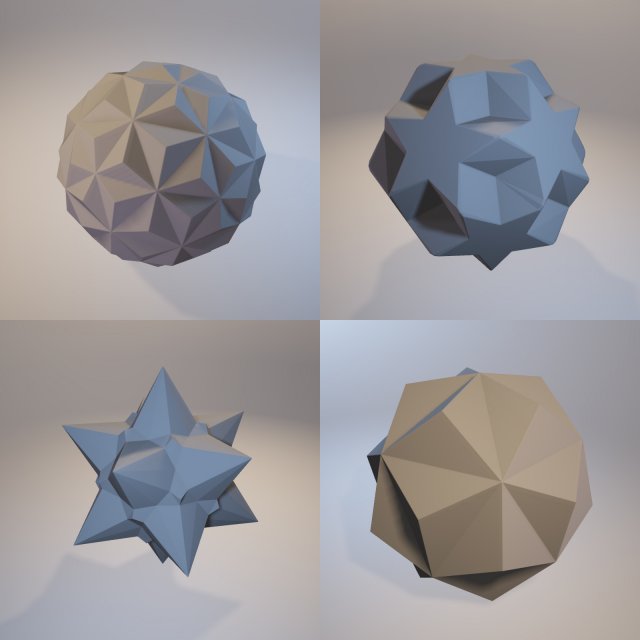 A terribly handy thing for soldering and assembling all sorts of little things and boards, repairs, etc. If you don’t know what to give a techie for his birthday - here it is, the perfect option!
A terribly handy thing for soldering and assembling all sorts of little things and boards, repairs, etc. If you don’t know what to give a techie for his birthday - here it is, the perfect option! - Prefabricated flexible cable duct for wires. Flexible, however, only in two planes, but just right for the power wires of the table. I was once asked how best to print it, and I think it’s like this: Of course, any experienced printer understands that boots, gnomes, calibration cubes are most often printed and 'I should see how my printer prints', but about such nonsense should not be written. Let's move on to the Makerbot syngiverse, let's see what our colleagues are typing:
- 'Flexible' elephant. This model bends in five places, due to which the elephant 'lays down'. In principle, the same version of the doll.
- Eerily beautiful and amazing thing: a plastic sundial with no batteries and no electronics at all! By the way, I already wrote about them.
- We've all seen horror movies.
 The light there is usually turned on by a terrible sparking switch, which the heroes pull at the very last moment to make everything start. So, this one can be printed, but for small buttons.
The light there is usually turned on by a terrible sparking switch, which the heroes pull at the very last moment to make everything start. So, this one can be printed, but for small buttons. - Gas wrench. At 10. Horn-type at 13. Bucket of compression. Stepanych. Put the bolt. If all of the above words tell you something, you definitely need this adjustable wrench to show off to a familiar auto mechanic while loosely tightening the bolts on engine number 3.
- Millennium Falcon. Who has not dreamed of flying on it? Yes, any Star Wars fan will buy it from you for 1000 shekels, do not miss the chance, type faster)
This is where my top 10 ends, and then we have a bonus according to the plan, or rather even two:
1. The most useless model on the portal)) You can give it to your best friend, although there should be hands out!
2. And now, on the contrary, a terribly useful little thing. Anyone who collected furniture from Ikea will understand.
In general, everything. Print and be printed))
Subscribe to the author
Subscribe
Don't want
18
Article comments
More interesting articles
DrProg
Loading
11/08/2022
1318
9
Subscribe to the author
Subscribe
Don't want to
We continue to uncover the incredible opportunities of enterprises from China, to...
Read more
0
Subscribe to the author
Subscribe
Don't want
Ones Technology is a research and development center under the Ministry of Industry of Turkey.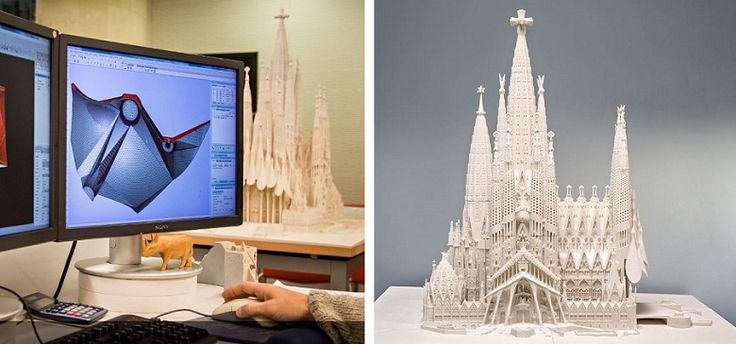 According to G...
According to G...
Read more
302
Follow author
Follow
Don't want
Hello dear community!
If the experiment was successful, then something is wrong here...
Read more
Zmorph is the most versatile 3D printer. Investigation from REC.
Hello everyone! Not so long ago, we got to see the unique multifunctional Zmorph platform. This article will tell you about our experience, observations and technical aspects revealed during 3D printing. However, since the Zmorph is not just a simple single extruder 3D printer, there will be additional articles about each interchangeable head describing the work, nuances and results.
General information about the device.
1. External dimensions - 530 mm x 555 mm x 480 mm.
2. Printable area - 250mm x 235mm x 165mm.
3. Number of printheads - 1
4. Weight is ~ 25 kg.
5. The printer is equipped with a thermal table, card reader, ethernet port and touch monitor.
6. Maximum nozzle temperature: ~260
7. Nozzle diameter: 0.4 mm, resolution: 200 to 70 microns
8. Construction speed 60-150 mm/s
9. Printing materials declared by the manufacturer: PLA, ABS, PETG, Laywood, nylon, rubber, etc.
10) Features - the main bonus of this printer is interchangeable heads. In our kit there are 1.75 single extruder head, 1.75 double extruder head, milling cutter, laser and extruder-syringe,
11) The printer has its own software, called Voxelizer. The program provides all the options for the heads of this device and has many settings.
Review
The printer itself looks quite serious, thanks to the metal and transparent plastic, it evokes the feeling of some kind of device from sci-fi films, although in principle we see a Prusa i2, but with a very rigid body.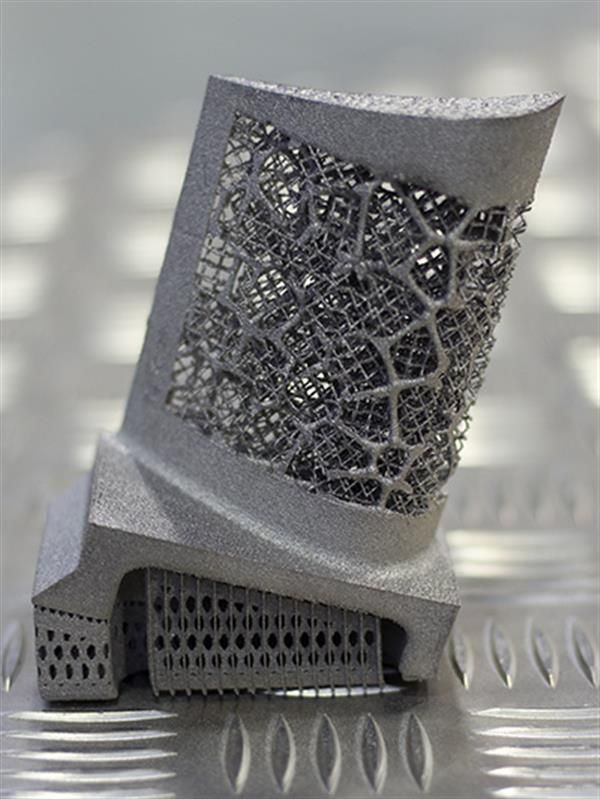
The extruder looks serious, the carriage itself is assembled from metal and a small number of printed parts. The airflow of the model is attached with magnets, which is very convenient.
Thermotable moves on two belts and rails, adjustable with 3 screws. Fastening is realized through magnets.
The axle guides are also made of sheet metal. No backlash, everything is very rigid.
The printer has a nice touch screen with its own menu.
Cable management is excellent in the printer body itself. All wires are perfectly protected from breaking and bending. All connectors that the user will have to work with are signed and marked.
The printer has an interesting implementation of the spool attachment mechanism and the filament channel.
This is how 0 is implemented on the Z axis.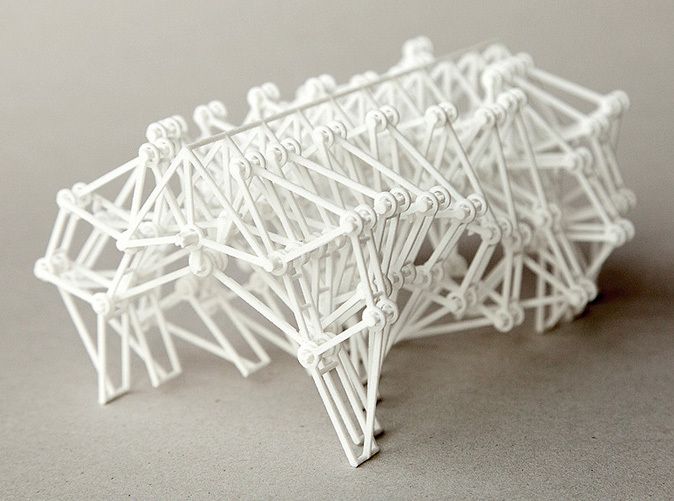
Very pleased with the highlighting and marking of important elements on a 3D printer. There is a feeling of working with an expensive industrial device.
Diode illumination of the printed model is a very nice element.
Like many other units, the outer protective case is also fixed with a magnet.
Software
Voxilaser looks like this
this is the first menu of transformations and settings, here we place objects, set their sizes, and also select the work area. In this case, workflow costs as 3D printer.
press voxilase and go to voxel editor. It has the usual print settings for all of us.
after we click generate g-code
here we see the generated task, it remains to press play
save it to a USB flash drive and print it.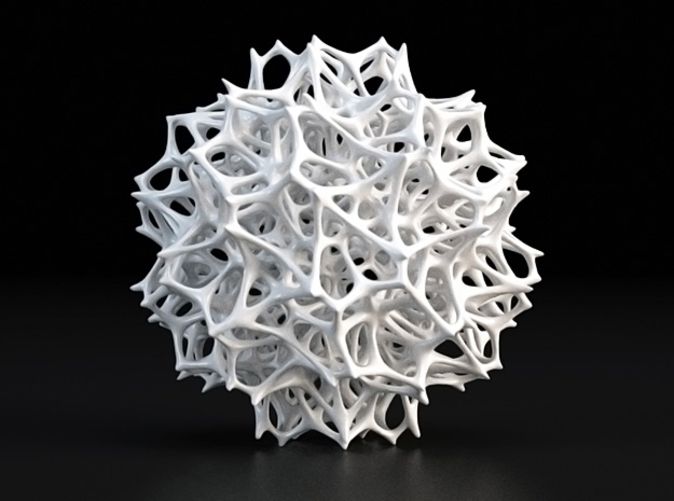
Print.
First print on a ZMorph 3D printer. A single extruder print head is used. Material natural REC PLA. Before printing, I had to calibrate the table.
Model can be found here: https://www.thingiverse.com/thing:1803617
Material red REC PLA plastic, print speed 90 mms
Material red REC PLA plastic, print speed 70 mms. (outer wall)
Relax
Material natural REC RELAX plastic, print speed 60 mm with 0.4 mm nozzle and 0.2 mm layer.
Bicycle pedals made of natural and white REC RELAX plastic. Layer height 0.15 mm, speed 30. In total, it took 48 hours to print, the result is stable.
Bonus
And now an unexpected bonus - ABS + HIPS printing test on the Dual PRO head.
It differs from the previous one by the ability to print two materials through one nozzle.
The slicing is not much different, all you need to do is set extruder 2 in some places. Thanks to the software, the head is able not only to create supports from another material or to imprint parts from different materials into each other, but also to mix them.
Now let's look at "two-color" printing.
The algorithm of actions is described here, but in general, it's very simple.
The result is just wonderful.
Now let's try blending. Let's fiddle a little with the settings again.
This tutorial describes how to do it.
Looking at the result
Unfortunately we overlooked the amount of pink ABS and ran out of it during the printing process, leaving most of the vase under extruded, but the resulting part shows that the blending occurs without any problems according to the given program.
Anyway, we did it again.
And now the result:
Conclusions.
Pros:
- Rigid frame, good design and very high quality assembly and components.
- Very precise kinematics.
- The ability to quickly remove and put on additional elements such as protective screens, a cooler for blowing the model, a working head and even a heating table.
- Easy-to-learn software with lots of settings and features.
- Convenient print area.
- The printer has all the necessary warnings and markings, heated table, extruder and powered Z and X axes are illuminated by diodes. The printed object itself is also illuminated, which helps to keep track of the printing process.
- User-friendly interface with a set of useful features. Fine-tuning printing is easy enough, all the icons are unambiguous and large enough not to miss them.
- Printer gives excellent results at low to medium speeds from PLA and RELAX
Cons:
- It is very easy to calibrate the table due to the magnetic mount, you will not only have to level the table plane, but it is very likely to set zero on the Z axis, after removing the part or detaching the table.

- This printer is conceived and designed as an MFP, not as a 3D printer, so it has a high margin of safety and rigidity, while at the expense of print speed
- there may be traces of underextrusion or, conversely, excessive drops on the surfaces of models, especially when it comes to a large number of retracts.
- The spool mounting on the printer is interesting, but practice has shown that the filament supply channels can get stuck in the case, stretch and thereby interfere with the plastic supply.
- The software calculates the print time very accurately, but not the amount of plastic needed.
- Printing with flexible materials is difficult again due to thermal distribution, difficulty in feeding the plastic through the tube, and too much pressure that compresses the bar.
Pro Dual PRO
This head has been tested for the main tasks conceived in the design. This system is capable of printing solvent-based supports in PLA+PVA and ABS+Hips combinations, and also allows two-color printing.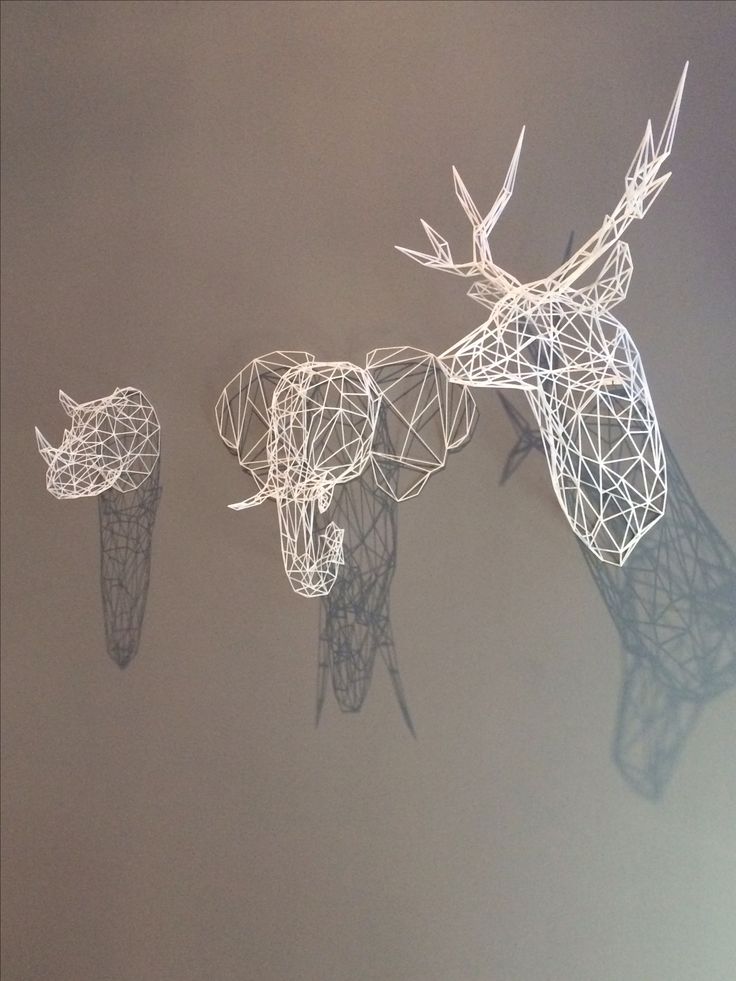 and The ability to mix colors with a gradient comes as a special feature.
and The ability to mix colors with a gradient comes as a special feature.
Plug&play head, we installed it, filamented it, and started the job. Slicing in Voxeliser, even for this mode, is very simple and intuitive. If you don’t figure it out yourself, there are good tutorials on working in text and video format on the manufacturer’s website.
Conclusion.
Zmorph is a unique platform with many possibilities. Our practice of using it as a 3D printer has shown that this device requires very thoughtful use. This is also due to the software, in which the interface is very clear, but overloaded with elements, which makes it easy to miss something in the settings. It is worth noting a very tough and thoughtful case filled with useful features, markers and indicators. Despite its robust and simple design, the Zmorph printer is not one of the best offerings on the market, as it is built solidly and reliably to handle a range of versatile tasks, not just printing.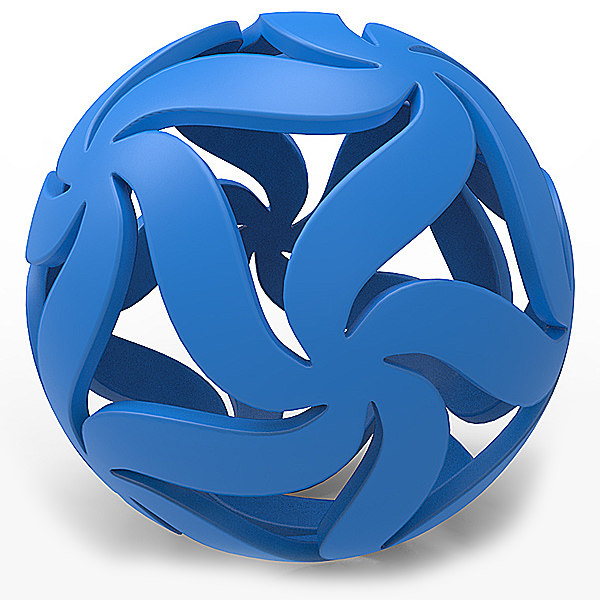 Therefore, the printer is quite reliable, but not very fast in the additive manufacturing of objects.
Therefore, the printer is quite reliable, but not very fast in the additive manufacturing of objects.
At the same time, working with Zmorph is very simple, in order for the device to behave like plug'n play you just need to remove the printed models very carefully, trying not to pull the table off its mounts and thereby violate its calibration.
In general, the printer produced the best results at speeds from 30 to 70 mms (infill and outer contour, travel from 120 to 180 mms) with REC PLA and REC RELAX plastics. When printing ABS and ETERNAL, it is necessary to install protective screens, as they are enough to avoid delamination of the object.
Summing up, we note that Zmorph is a unique machine that will give the user great opportunities, and in return will only ask you to follow the instructions. This device will find its well-deserved place in various workshops, design bureaus, and especially in educational institutions.
If you have any questions, write comments, call, contact us in the social.






